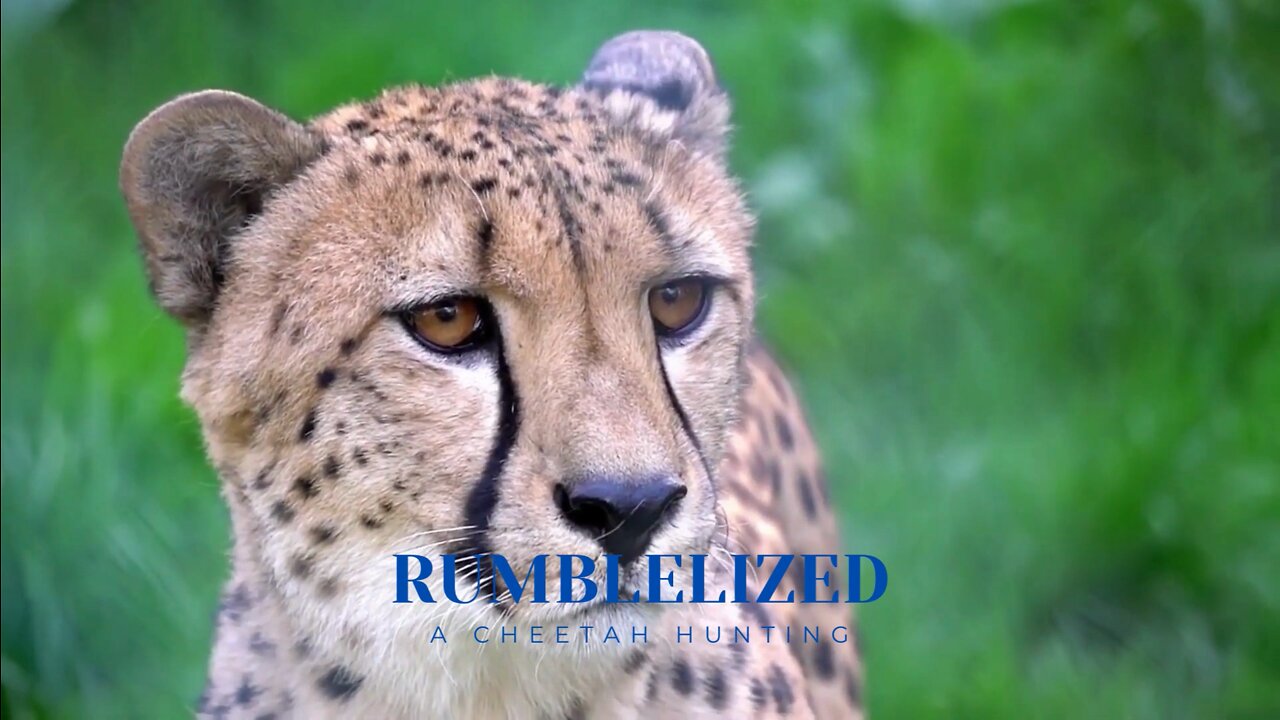Premium Only Content

Cheetah hunting prey
The cheetah (Acinonyx jubatus) is a big cat native to Africa and central Iran. It is the fastest land animal, capable of running at an estimated 80 to 128 km/h (50 to 80 mph), with fastest reliably recorded speeds of 93 and 98 km/h (58 and 61 mph). Some adaptations for speed, such as a light build, long thin legs and a long tail. It usually reaches 67-94 cm (26-37 in) at the shoulder and measures 1.1-1.5 m (3 ft 7 in and 4 ft 11 in) from head to body. Adults weigh 21-72 kg (46-159 lbs). The head is small and round, with a short snout and black teardrop-like facial stripes. The coat is usually tan to off-white or light tan, mostly covered with evenly spaced black spots. Four subspecies are recognized. [3]
The cheetah lives in her three main social groups: females and their young males, male "federations", and solitary. Females lead a nomadic lifestyle, searching for prey in large habitats, while males are more sedentary, instead establishing much smaller territories in areas where prey is plentiful and accessible to females. Cheetahs are active during the day, peaking at dawn and dusk. Mainly weighing less than 40 kg, she feeds on small to medium-sized prey, preferring medium-sized ungulates such as impalas, springboks and Thomson's gazelles. Cheetahs typically pursue their prey to within 60 to 70 m (200 to 230 ft), then charge, stumble in pursuit, and bite their throats in an attempt to suffocate them. Breeds all year round. After a gestation period of about 3 months, her 3-4 cubs are usually born. Cheetah cubs are highly vulnerable to predation by other large carnivores such as hyenas and lions. They are weaned at about 4 months and become independent at about 20 months. Cheetahs are found in a variety of habitats, including the savannahs of the Serengeti, the arid mountains of the Sahara Desert, and the foothills of Iran. Cheetahs are threatened by multiple factors, including habitat loss, conflict with humans, poaching, and high susceptibility to disease. Cheetahs historically spanned much of sub-Saharan Africa and spread eastward into the Middle East and central India, but are now mainly found in central Iran and small patches of southern, eastern and northwestern Africa.
-
 1:02:57
1:02:57
In The Litter Box w/ Jewels & Catturd
1 day agoKASH CONFIRMATION TODAY! | In the Litter Box w/ Jewels & Catturd – Ep. 746 – 2/20/2025
82.6K68 -
 56:44
56:44
VSiNLive
3 hours ago $4.35 earnedFollow the Money with Mitch Moss & Pauly Howard | Hour 1
72.1K3 -
 1:08:41
1:08:41
John Crump Live
7 hours ago $1.04 earnedUSA v. Canada! Bigger Than Just A Game
31.4K6 -
 1:58:40
1:58:40
Revenge of the Cis
4 hours agoEpisode 1450: Wet Work
35.9K3 -
 3:36:29
3:36:29
vivafrei
10 hours agoKash Patel Confirmation Hearing LIVE! Jan. 6'er Kicked Out of CPAC? DOGE Wins in Court? & MORE!
253K254 -
 5:08:38
5:08:38
Barry Cunningham
10 hours agoTRUMP DAILY BRIEFING: KASH PATEL VOTE | WHITE HOUSE PRESS CONFERENCE | DOGE UPDATE
73.3K27 -
 1:57:54
1:57:54
The Quartering
8 hours agoRand Paul Praises Trump, Amazon Takes Control of Bond, and Delta Gives Passengers $30,000
110K39 -
 1:01:59
1:01:59
The White House
6 hours agoPress Secretary Karoline Leavitt Briefs Members of the Media, Feb. 20, 2025
119K136 -
 59:58
59:58
Russell Brand
8 hours agoLive from Mar-a-Lago: The Globalist Empire’s Last Stand – SF541
174K222 -
 35:23
35:23
CryptoWendyO
6 hours ago $2.76 earnedCrypto Chaos Unleashed: Trump Making USA The Bitcoin Capital Of The World
45K5